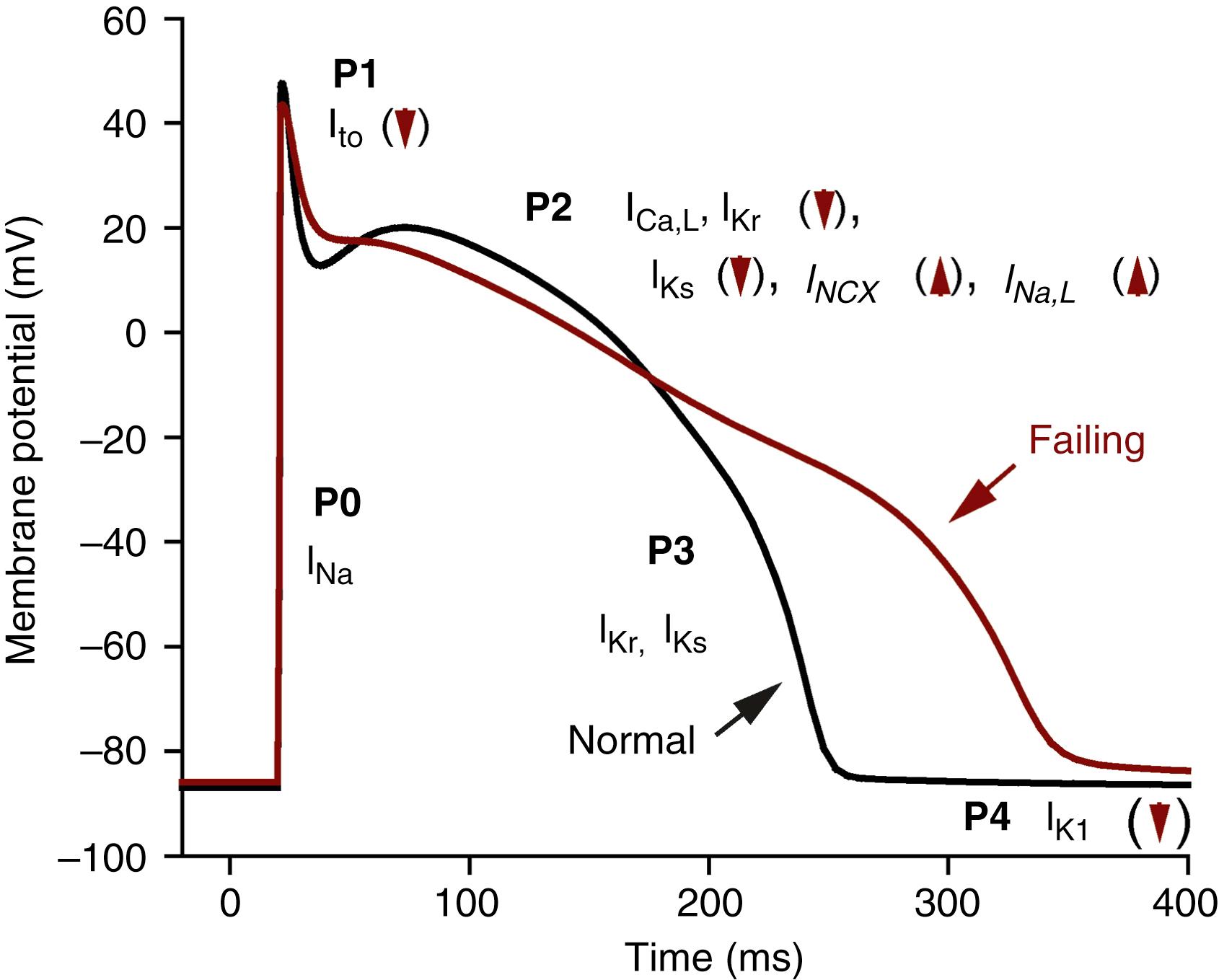Physical Address
304 North Cardinal St.
Dorchester Center, MA 02124
Over the course of the average human life span, the heart will beat more than 2 billion times. Moreover, the cardiovascular system must be essentially failproof across the decades of human life as any loss of function even for only minutes may be fatal. To ensure robust cardiac function, the heart has evolved elaborate pathways to regulate excitability across diverse cardiac cell types (sinus node myocytes, atrial myocytes, cardiac Purkinje fibers, and ventricular myocytes) with the ability to fine tune the cellular response to acute and chronic physiologic or pathologic stimuli. Vertebrate cell excitability is governed by the activity of ion channels and transporters that control the movement of charged ions across membrane networks to tune electrochemical gradients ( Fig. 23.1 ). Moreover, congenital or acquired defects that alter the biophysical properties of ion channels (activation, inactivation) have been directly linked with a host of human arrhythmia syndromes, including sinus node disease, atrial fibrillation, conduction disorders, and potentially fatal ventricular arrhythmias. Although these diseases make up the majority of cardiac channelopathies two new and related classes of alternative pathways for cardiac channelopathies have emerged because of the defects in ion channel or transporter trafficking or ion channel posttranslational modification (PTM). This chapter highlights how dysfunction in these two alternative pathways are linked to arrhythmia phenotypes.

Steady-state ion channel/transporter function is regulated by membrane protein synthesis, trafficking, membrane stabilization, internalization/recycling, and degradation. Ultimately, these pathways control the ensemble of ion channels and transporters that regulate the cardiac action potential (AP) (see Fig. 23.1 ). As noted earlier, each excitable cardiomyocyte harbors unique combinations of membrane ion channels and transporters that control membrane depolarization and repolarization. In this way, the sinus node myocyte is able to maintain a more depolarized resting membrane potential than an atrial or ventricular myocyte to support automaticity. As reviewed in Chapter 25 , ion channels and transporters are synthesized in the endoplasmic reticulum and, after modification in the Golgi and trans-Golgi network, move through the endosome pathway to their final destination at the plasma membrane or sarcoplasmic reticulum (SR) membrane. In response to external and cellular cues, membrane proteins are internalized for degradation or recycling. Defects in all of these cellular pathways are implicated in human disease but may involve diversity in mechanisms of dysfunction.
As previously noted, membrane protein trafficking first requires a newly synthesized protein to travel from the endoplasmic reticulum through the multiple layers of the Golgi apparatus. These organelles not only serve to modify membrane proteins with appropriate carbohydrate moieties but also serve as “quality control” pathways to ensure that immature or misfolded proteins are removed from the biosynthetic pathway and ultimately targeted for degradation. Directly related to this chapter, the human ether-à-go-go (hERG1) protein (K V 11.1, encoded by KCNH2 ) serves as the α-subunit for I Kr , a voltage-dependent K + current critical for cardiac repolarization (see Fig. 23.1 ). , Human loss-of-function mutations in hERG1 lead to aberrant repolarization, resulting in AP prolongation, and the second most common form of human long QT syndrome (LQTS), LQT2. , Notably, a large fraction of the more than 200 hERG1 loss-of-function variants linked with LQT2 are associated with misfolding and ultimately altered trafficking and rapid degradation of the immature polypeptide. Misfolding of hERG may be amenable to therapy, as overexpression of DNAJB14, a J-protein that promotes hERG assembly, rescues the folding and functional defects in some LQTS-related hERG variants. Defects in membrane protein folding are certainly not limited to cardiac voltage-gated K + channels. For example, there are numerous examples of voltage-gated Na V channel defects linked to altered protein folding, again resulting in reduced membrane expression because of premature degradation.
Become a Clinical Tree membership for Full access and enjoy Unlimited articles
If you are a member. Log in here